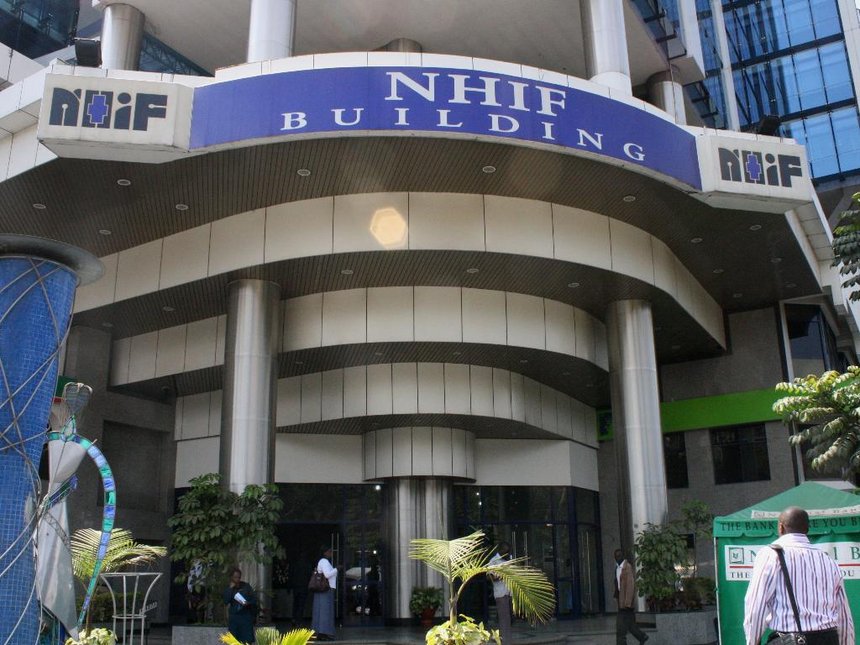News
Revealed: Schemes Used To Defraud NHIF Millions

A patient checks into a medical facility, is admitted, undergoes a surgical procedure and spends a few days recuperating at the hospital.
During this period, the said patient is also at work with no signs of illness. Company records will show that they did not seek sick leave as they were well enough to show up punctually and leave after an honest day’s work.
This patient is not alone. Tens more are concurrently spending entire days and nights in different hospital beds and at work. Strangely, many of them are co-workers. Some of them will later claim to have no knowledge of the facilities into which they were allegedly admitted despite hospital records showing they were checked in and out using their biometrics.
Others would later testify that they visited the said facility but were never admitted. Only a few will admit to have been a part of an elaborate scheme to defraud the National Health Insurance Fund (NHIF) in fictitious claims and received a paltry fraction of the loot.
Such are the shocking revelations of an audit of 67 hospitals, which netted 27 facilities allegedly colluding with Kenyans to mint millions in fraudulent NHIF claims.
The internal audit, which investigated the activities of the hospitals between July 2022 and June 2023, found that Sh171 million was lost in the illicit scheme.
The Health Ministry estimates that more than Sh20 billion could have been lost during the stated period, meaning the country has bled billions over the years. This figure is the result of an extrapolation with the assumption that 40 per cent of the country’s more than 8,800 health facilities could be engaging in the fraud.
Health CS Susan Nakhumicha said some of the strategies most commonly used include induced demand and sickness, “wherein facilities deceitfully activate dormant accounts of members, financing medically unwarranted treatments”.
“Fictitious records, manufactured claims, and deceptive practices, such as falsely indicating members undergoing major surgeries while actively at work, have all contributed to defrauding the Fund (NHIF),” Nakhumicha said Friday of a scandal that mostly targets vulnerable citizens, with security guards disproportionately implicated.
The CS vowed to see to it that the reforms initiated bore fruit. “What the government is doing is to seal all loopholes being exploited by rogue hospitals and officials to defraud the Fund. The reforms will pay off in due course,” said Nakhumicha.
Investigations into two facilities in Nairobi revealed collusion between the hospitals and several security guards, with the latter providing biometrics in exchange for money, according to two suspects who admitted as much.
One of them is reported to have received Sh15, 000 for their NHIF card at one of the facilities for a fake surgical procedure and admission, while another stating he faked treatment at the other hospital in exchange for Sh10, 000.
The first hospital is not authorised to conduct surgeries and is only registered for outpatient services. The said provider is reported to have received irregular payments of more than Sh153 million for inpatient and surgical benefits, with the audit estimating the total sum lost in fake NHIF claims at Sh140 million.
However, the confirmed proceeds of fraud, according to the NHIF audit report, is Sh15.8 million in claims already paid to the hospital out of the Sh17.8 million total claims.
The audit reported instances of fake admissions of patients also reported to be at work when they were allegedly in the hospital. Among them are some 26 out of 27 workers of a security firm allegedly admitted at the hospital, whose total claims amounted to more than Sh3.6 million.
All of them checked in with their biometrics with 24 checking out with the same, proving, according to the audit, collusion. None of them were in the hospital’s surveillance report.
Some 16 employees of a different security firm were also found to have colluded with the facility to defraud the NHIF of Sh2 million.
The same strategy was found to have been used in the second facility, which reportedly received Sh8 million in fraudulent claims, with the report stating that some Sh33.5 million could have been lost in the total claims paid to the facility.
For instance, some seven employees of a security firm, also implicated in collusion with the first hospital, were part of the scheme. They, too, are alleged to have undergone surgical procedures worth a total of Sh810,000, despite records showing they were at work.
Strangely, employees of the same firms are the most implicated in such schemes, which also allegedly involve government employees across some ministries.
Another Nairobi facility faked its bed capacity for more claims. The hospital has a 20-bed capacity but NHIF systems indicated it had 40 beds, which is lower than the number in its operating license – 51.
“Considering the confirmed physical count of 20 beds, the excess notifications of 21 amounting to Sh7,764,450 could not be supported,” reads a summary of the report.
Further, patients recorded in the hospital’s register did not match the admissions. A different facility in Meru was found to have obtained Sh403,000 from bed claims. The hospital, with a capacity of 83 beds, filed claims for 137 beds.
The hospital also had incomplete registers for surgical procedures it performed, resulting in a Sh4.1 million loss of NHIF funds.
The report further flagged high claims for the Edu Afya scheme availed to students. A medical centre with the same name as the Meru hospital raised 3,177 claims worth Sh3 million. Investigations revealed that a private white van picked students for treatment at the hospital and back. However, the hospital did not keep a manual outpatient register and could not provide data of hospital visits.
Kenya Insights allows guest blogging, if you want to be published on Kenya’s most authoritative and accurate blog, have an expose, news TIPS, story angles, human interest stories, drop us an email on [email protected] or via Telegram
-

 Investigations1 week ago
Investigations1 week agoBillions Stolen, Millions Laundered: How Minnesota’s COVID Fraud Exposed Cracks in Somali Remittance Networks
-

 News1 week ago
News1 week agoUS Moves to Seize Luxury Kenya Properties in Sh39 Billion Covid Fraud Scandal
-

 News1 week ago
News1 week agoMAINGA CLINGS TO POWER: Kenya Railways Boss Defies Tenure Expiry Amid Corruption Storm and Court Battles
-

 Investigations1 week ago
Investigations1 week agoJulius Mwale Throws Contractor Under the Bus in Court Amid Mounting Pressure From Indebted Partners
-

 Americas1 week ago
Americas1 week agoUS Govt Audits Cases Of Somali US Citizens For Potential Denaturalization
-

 Business1 day ago
Business1 day agoEastleigh Businessman Accused of Sh296 Million Theft, Money Laundering Scandal
-

 Business1 day ago
Business1 day agoEXPLOSIVE: BBS Mall Owner Wants Gachagua Reprimanded After Linking Him To Money Laundering, Minnesota Fraud
-

 Americas3 days ago
Americas3 days agoTrump Says US Needs Greenland For Its National Security
















